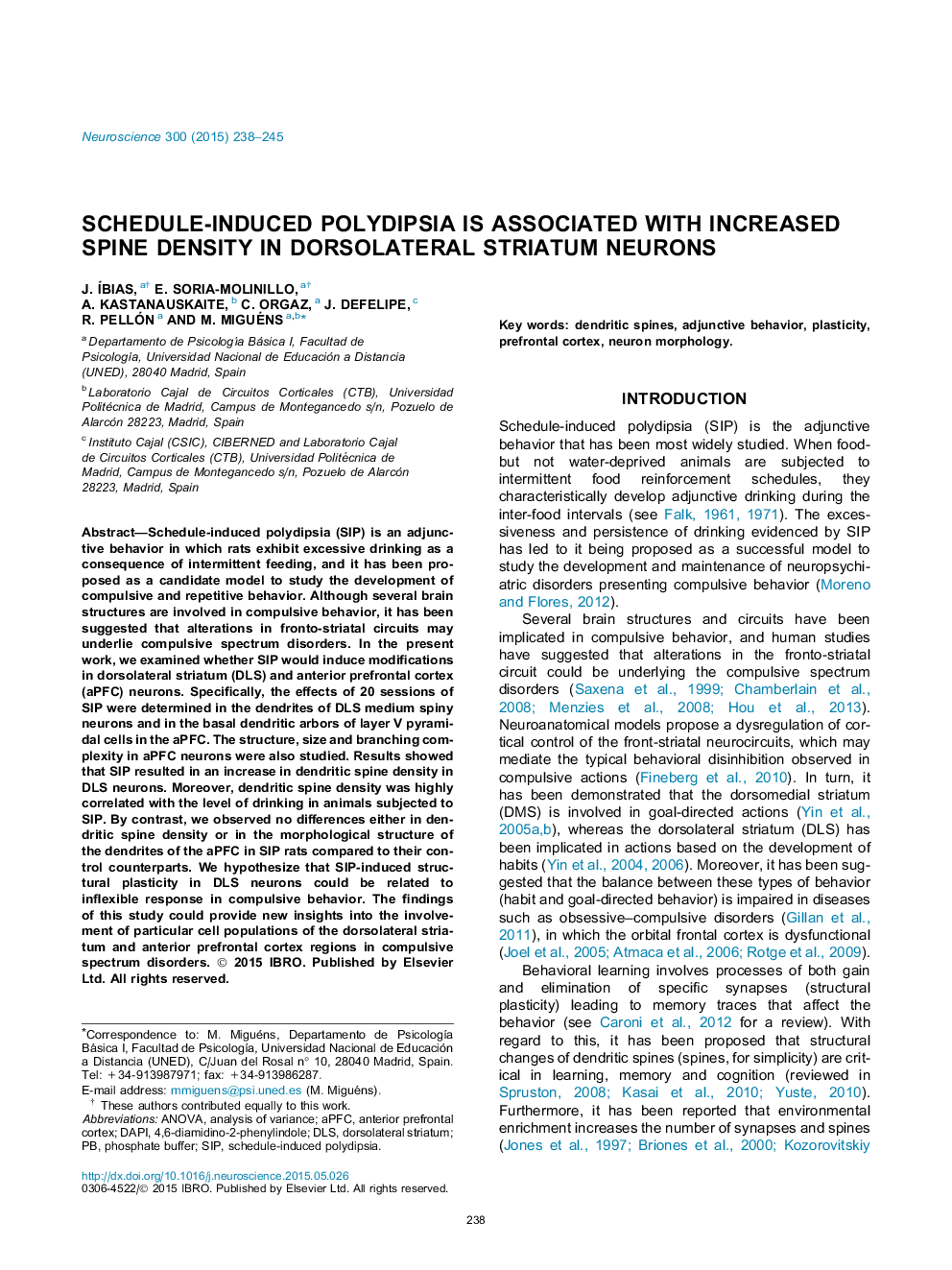| کد مقاله | کد نشریه | سال انتشار | مقاله انگلیسی | نسخه تمام متن |
|---|---|---|---|---|
| 6271968 | 1614776 | 2015 | 8 صفحه PDF | دانلود رایگان |
• Schedule-induced polydipsia increases spine density in the dorsolateral striatum.
• Structural plasticity in the striatum is involved in schedule-induced polydipsia.
• Schedule-induced polydipsia induces structural plasticity in the dorsolateral striatum.
Schedule-induced polydipsia (SIP) is an adjunctive behavior in which rats exhibit excessive drinking as a consequence of intermittent feeding, and it has been proposed as a candidate model to study the development of compulsive and repetitive behavior. Although several brain structures are involved in compulsive behavior, it has been suggested that alterations in fronto-striatal circuits may underlie compulsive spectrum disorders. In the present work, we examined whether SIP would induce modifications in dorsolateral striatum (DLS) and anterior prefrontal cortex (aPFC) neurons. Specifically, the effects of 20 sessions of SIP were determined in the dendrites of DLS medium spiny neurons and in the basal dendritic arbors of layer V pyramidal cells in the aPFC. The structure, size and branching complexity in aPFC neurons were also studied. Results showed that SIP resulted in an increase in dendritic spine density in DLS neurons. Moreover, dendritic spine density was highly correlated with the level of drinking in animals subjected to SIP. By contrast, we observed no differences either in dendritic spine density or in the morphological structure of the dendrites of the aPFC in SIP rats compared to their control counterparts. We hypothesize that SIP-induced structural plasticity in DLS neurons could be related to inflexible response in compulsive behavior. The findings of this study could provide new insights into the involvement of particular cell populations of the dorsolateral striatum and anterior prefrontal cortex regions in compulsive spectrum disorders.
Journal: Neuroscience - Volume 300, 6 August 2015, Pages 238–245
